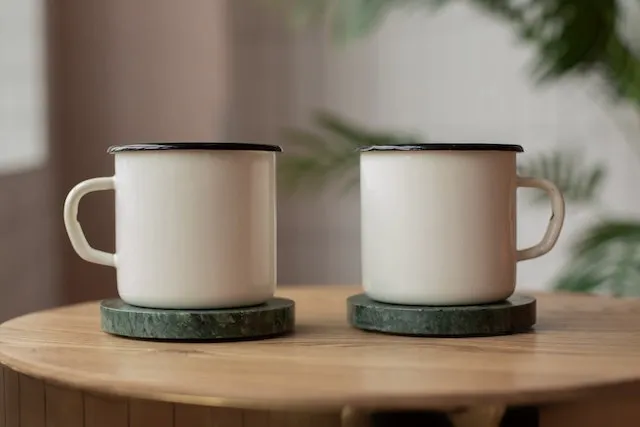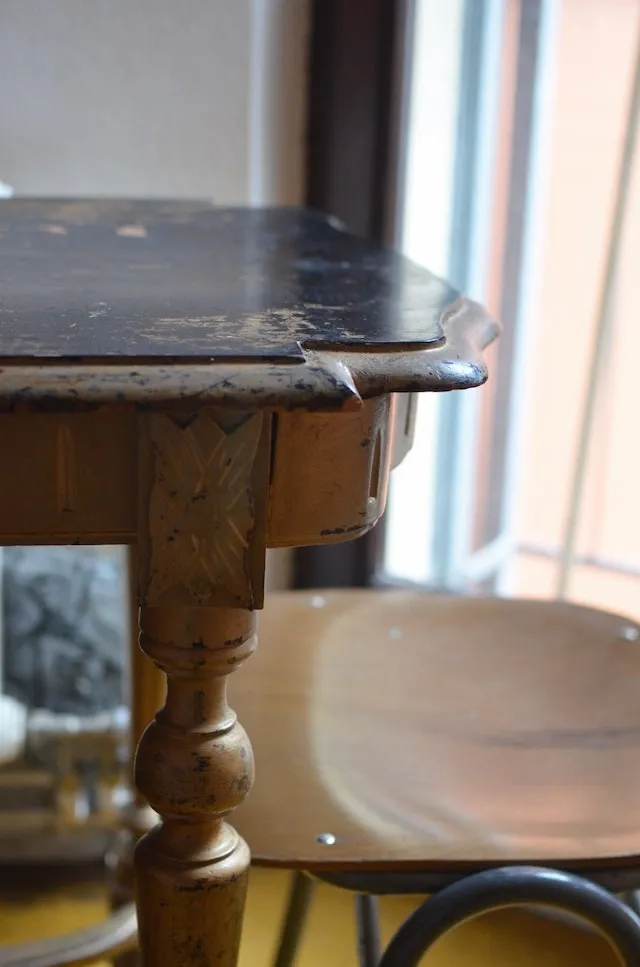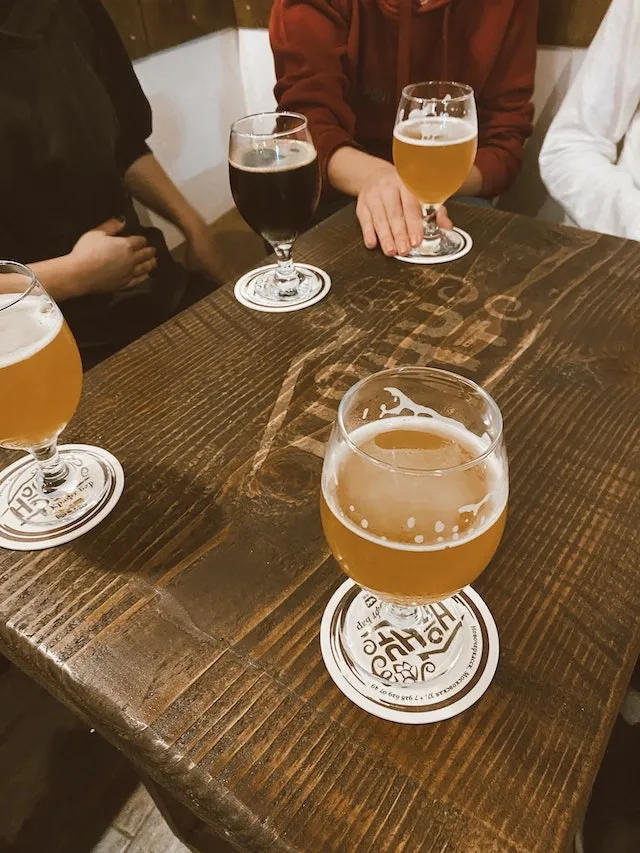What Are Drink Coasters Used For?
Some individuals never cease to remind others to use a coaster, and for valid reasons! These small, often ornamental pads serve to safeguard tabletops and surfaces, but their purpose extends further. Read on to learn more about the use of coasters and reconsider before ignoring them in any situation.

Key Takeaways
- Coasters are used to protect tables and add to a spaceÔÇÖs overall aesthetics
- They are important for preventing stains/damage and preserving your furniture
- The main threats to your furniture from drinkware include water rings, stains, heat damage and scratches
- With a little creative thinking, coasters can have many other uses as well
- Wood tables need coasters, as do o
What Are Coasters Used For?
The primary function of coasters is to act as a barrier between glasses, mugs and other beverage containers and the surface beneath. They protect tabletops and other surfaces against damage that could be caused by:
- Heat
- Moisture
- Scratching
One of their most useful purposes is to prevent stains and water rings being left on surfaces by condensation on beverages.
Another important role in the use of coasters in any setting is to contribute to the overall decor by adding a decorative touch to an interior or exterior setting. Their functions are practical and aesthetic, contributing to both the preservation and presentation of tabletops and other furniture surfaces.

Why Do You Need A Drink Coaster?
There are various important reasons for coaster use. They play an important role in many domestic and commercial settings. Here are just some of the reasons they are needed:
- Preventing stains: When a cold drink is placed on a surface, the condensation can leave moisture rings that leave unsightly stains. Coasters provide a barrier that prevents this from happening.
- A protective barrier: As well as stain prevention, the use of coasters protects against damage from heat and scratching. This keeps stabletops and other surfaces looking pristine.
- Durability: Coasters extend the lifespan of your furniture by preventing things like wear and tear and liquid exposure.
- Aesthetics: There are many, many coaster styles and designs, so they can contribute to your decor in creative and personal ways. Use them to complement your interior design and enhance your space.
- Hygiene: By preventing immediate contact between beverages and surfaces, coasters reduce the risk of bacteria being transferred.
Altogether, coasters play an important role in maintaining the look, function and hygiene of your spaces.
Get optimal surface protection with custom coasters
Our custom absorbent coasters are available in a range of materials and offer effective surface protection against condensation, spills, heat, and scrapes with many customization options available.
These Are The Damages Coasters Protect Your Furniture From
Let’s take a closer look at the types of damage that coasters protect against. From water rings, to stains, to heat damage and scratches, there are various things that you can avoid with the use of coasters.
Water Rings
Water rings occur when condensation forms on a cool beverage container, such as a glass, and is transferred to a tabletop through direct contact. This condensation is a result of the temperature difference between the drink and the surrounding environment. When this moisture is transferred to a tabletop, it leaves behind a water ring.
However, by using a coaster placed between the drinkware and the surface, the moisture never touches the table, preventing the formation of water rings.
Stains
Our immediate answer to the question "What are coasters?" is that they act as barriers. Similar to their function of protecting against water marks, they also prevent stains. When spills or drips occur, the liquid could potentially reach the table or other furniture surface. However, with a coaster in place, it acts as a shield, preventing the spill from making contact with the surface and thus avoiding any kind of staining or discoloration.
Moreover, coasters can be crafted from materials that are resistant to staining themselves, enhancing their effectiveness in safeguarding tabletops while also preserving their own pristine appearance.
Scratches
When items like mugs or glasses are placed directly onto a surface, they can cause accidental scratches from the fiction that results from movement. Coasters function as a buffer between the object and the tabletop, reducing the risk of scratches by preventing direct contact.
Coasters often have a non-slip, soft underside that further enhances this protection. If the coaster is soft on its underside, and is unlikely to move on the surface, your furniture remains scratch-free.
Heat Damage
Heat can potentially cause damage or discoloration to surfaces when a hot beverage cup is placed directly on them. Coaster use acts as a protective barrier against this type of damage. Certain coaster materials, such as ceramic or cork, are heat-resistant, enhancing their ability to insulate between the hot item and the surface. This significantly reduces the risk of heat damage occurring.

What Else Can You Use Coasters For?
Besides their decorative function and acting as a protective barrier for tabletops and furniture surfaces, what are coasters used for? Well, with a little creative thinking, coasters can actually be useful for many things. Use them as miniature art canvases, or saucers to put under potted plants, for example.
Here are some lesser-known uses of coasters:
- Candle bases: By placing small candles on top of coasters, you can protect the surface beneath from dripping wax and heat whilst also adding a decorative touch to your arrangement.
- Plant saucers: Coasters can be placed under potted plants to catch water drippage and prevent it from damaging your surfaces or floors.
- Furniture leg protectors: Place coasters between the floor and the bottom of furniture legs to avoid scratches or other damage to floors.
- Drawer liners: Line your drawers with coasters to prevent small items from rolling around or scratching the drawer surface.
- Jar decor: This little-known coaster use leverages the decorative appearance of your coasters. Use them as the tops of jars to add some visual appeal to your storage containers.
- Cord organizers: If you have cords that need to be stored, wrap them around coasters to keep them organized and prevent tangling.
- Pet bowl mats: Place coasters under your pet food bowls to catch spills and avoid staining and water damage to floors.
- Keyboard lifts: You could stack coasters under your keyboard or laptop to raise it higher and make it more comfortable when using.
- Miniature art canvases: Coasters can make great mini canvases for painting your small artworks or designs. Depending on the material, you may be able to paint, draw or collage on them to create something entirely new with this lesser-known use for candles.
In the right hands, coasters are actually very versatile additions to the home. Repurpose them creatively to suit a wide range of needs around the home or workspace.
Coasters In Multi-Use Spaces During Remote Work
With remote work now the new normal for many homes, coasters have become more important than ever in dual office-living areas. Keeping a coaster at your desk can prevent issues like:
- Coffee stains
- Heat rings from mugs
- Condensation damage on laptops or wood desks
We recommend that you opt for silicone or cork coasters with non-slip backing to provide protection for electronics and surfaces simultaneously. A simple coaster swap each morning reinforces the habit and might just extend the life of both your furniture and your tech.
Need to advertise your business or a special promotion?
Coasters can be very effective marketing tools. Enjoy tabletop protection with a powerful marketing edge by designing custom advertising round absorbent stone coasters with us.
Create yours hereThe Good Things About Coasters
Coasters are versatile and essential items for both homes and establishments. At our company, we offer a diverse selection of customized coasters made from various high-quality materials. Our customization options allow you to create the perfect solution tailored to your space's practical and aesthetic requirements. This personalized approach proves more advantageous than searching for generic coasters that may not fit your needs precisely. Moreover, you can benefit from cost savings per coaster by placing bulk orders with us.
The benefits of coaster use include:
- Surface protection against moisture, stains, scratches and heat damage.
- A decorative addition to enhance your interior design or theme
- An excellent way to improve hygiene
- A versatile piece of equipment that can be used in many ways with a little creativity
With bespoke coaster designs, you can also use them to contribute to your brand or include important details for your guests or audience. People will be in close quarters with your coasters when enjoying their beverage, so they present an excellent opportunity to leave a lasting impression through exceptional design and impactful messaging.
What Happens If You Don't Use A Coaster?
There are several consequences you are likely to face if you fail to make use of coasters. They primarily relate to the aesthetics of your space and the condition of your furniture. Here are some things that might happen:
- Water rings and stains will appear on your surfaces from direct contact with moisture on drinkware.
- Surfaces will probably take damage in the form of warping and discoloration from heat exposure or scratches from friction.
- You may encounter hygiene issues as spills falling directly onto tables are difficult to keep up with and could cause bacteria transference.
- Maintenance costs might go up as you start having to clean and repair furniture more frequently.
- Your branding may be less powerful as failure to use branded coasters is a missed opportunity to reinforce your messaging and brand identity.
Coasters may seem like a simple and unnecessary addition to a space, but they are actually very important to prevent a wide range of issues from occurring.
Create an effective protector for your car cup holders
We create special custom car coasters with a divot on the side for easy removal. Protect your cup holders and add an aesthetic feature for your car’s interior.
Do Wood Tables Need Coasters?
Coasters are particularly important for wood tables. Wood is porous, meaning it absorbs moisture easily. If liquids come into contact with it, the result can be water rings, stains, and even warping and cracking in the long term.
The use of coasters on wood tables helps avoid:
- Water rings and staining from condensation and spills
- Heat damage from drinkware containing hot beverages
- Scratches from the scraping of glasses and other items
- Warping and cracking from long-term exposure to excess moisture that penetrates the surface
- Hygiene concerns from bacteria transfer and moisture accumulation
Essentially, if you want your wood tables to be free from damage and preserve their pristine appearance, the use of coasters is highly recommended. Whether they are waterproof coasters, heat-resistant ones, or made from absorbent materials, coasters are important for wood tables.

What Surfaces Do You Need Coasters For?
There are various surfaces that can benefit greatly from coaster use. With regards to tables, there are different types that could be damaged or stained if you don’t use coasters. These include:
- Wood
- Metal
- Glass
- Marble and stone
- Plastic
The nature of these materials makes them vulnerable to damage from exposure to moisture or heat, as well as scraping from mugs, glasses, and more. With our custom coasters, you can choose materials like wood coasters or stone coasters to complement the aesthetic of the table in question. The decorative benefits of customizing your own coasters are numerous.
There are other types of surfaces that can benefit from coaster use too. These include:
- Laminated surfaces
- Special finishes like lacquer or veneer on desks or bartops
- Antique or delicate furniture
Essentially, if you have a surface where drinks containers may be placed, it’s a good idea to provide coasters to protect that surface.
Sustainable And Smart Materials For Eco-Friendly Coasters
In 2025-26, eco-conscious consumers often seek out coasters that are made from materials that reduce waste while naturally resisting moisture and heat. Common choices include:
- Reclaimed wood
- Bamboo
- Recycled cork
- Upcycled leather
Smart coasters with embedded RFID or NFC chips can even sync with your smartphone to monitor things like hydration habits or drink temperature. This may seem like an unnecessary step for home, but many tech-savvy homeowners will enjoy these features.
With these modern and sustainable options, you may be able to elevate the utility and appeal of your coasters and further understand how their use extends beyond mere surface protection.
Frequently Asked Questions About What Are Coasters Used For
What Are Coasters Used For?
Coasters are used as protective barriers to shield surfaces from direct contact with drinkware. This can prevent damage or staining from exposure to moisture, heat and more.
What Surfaces Do You Need Coasters For?
Virtually any surface can benefit from coaster protection. But they are particularly important for tabletops made from wood, metal, glass and stone.
What Happens If You Don't Use A Coaster?
Coaster use is important. If you don’t do it, you could end up with water rings, stains, heat damage, scratches and even hygiene issues in the long-term.